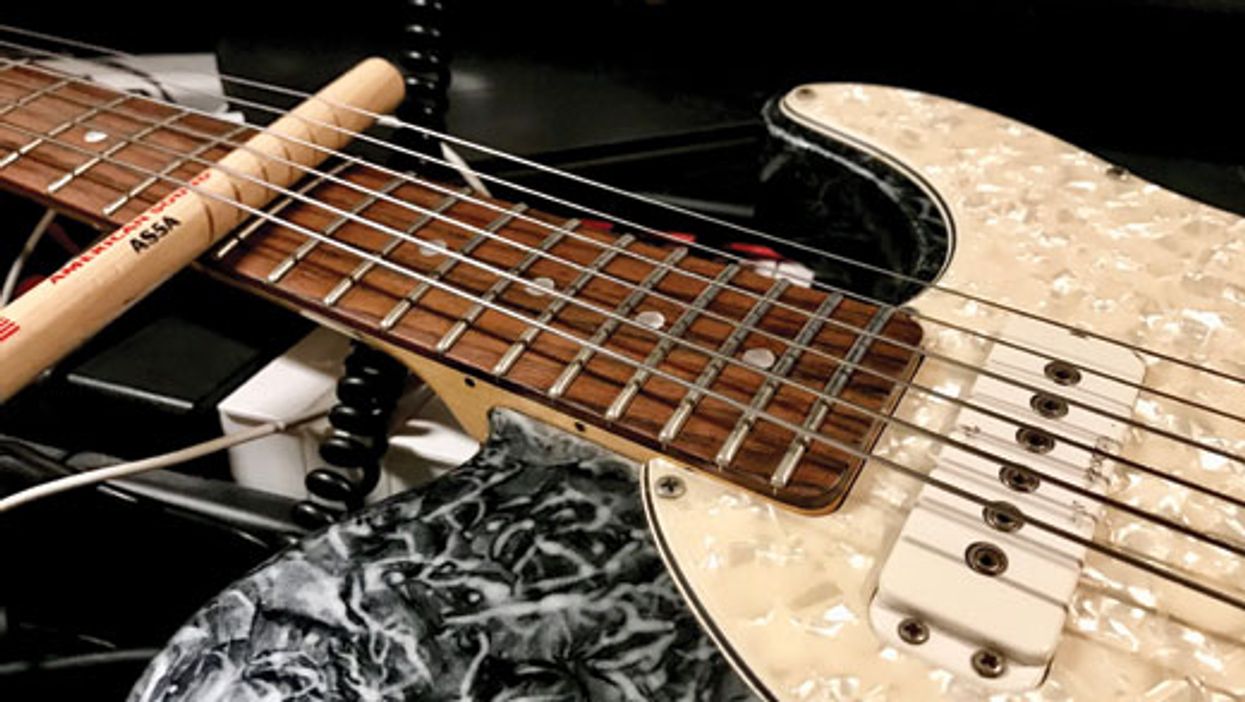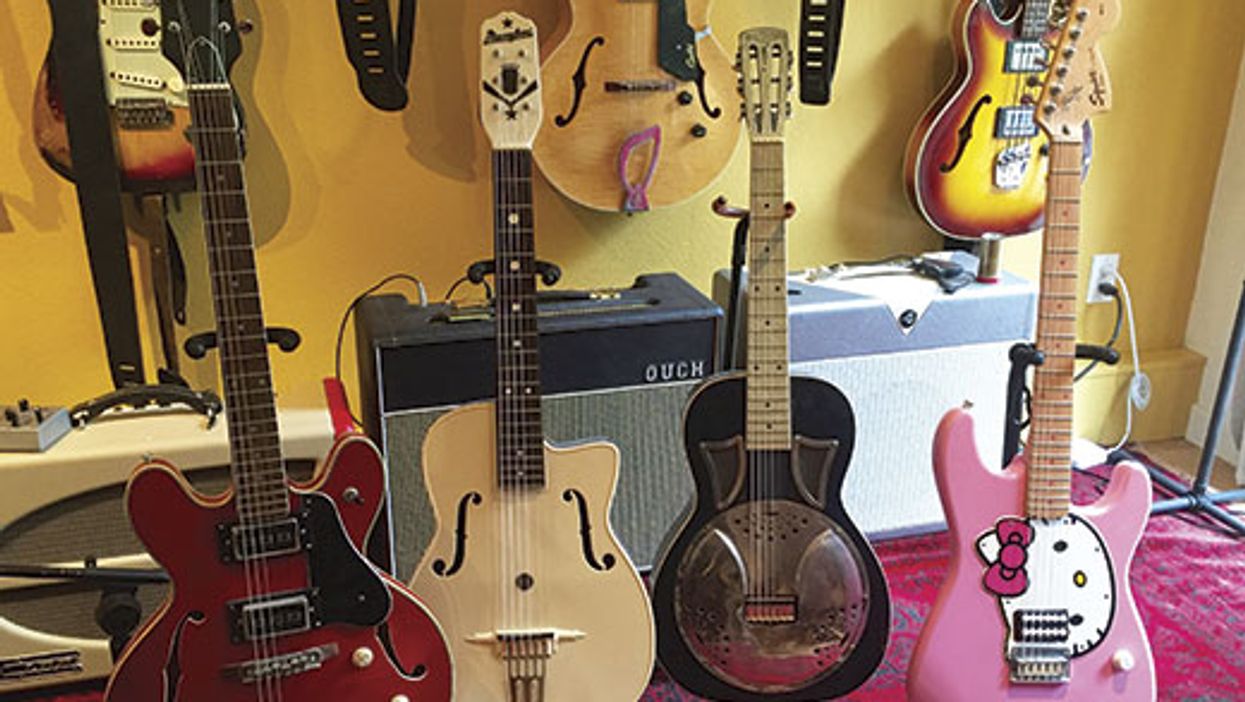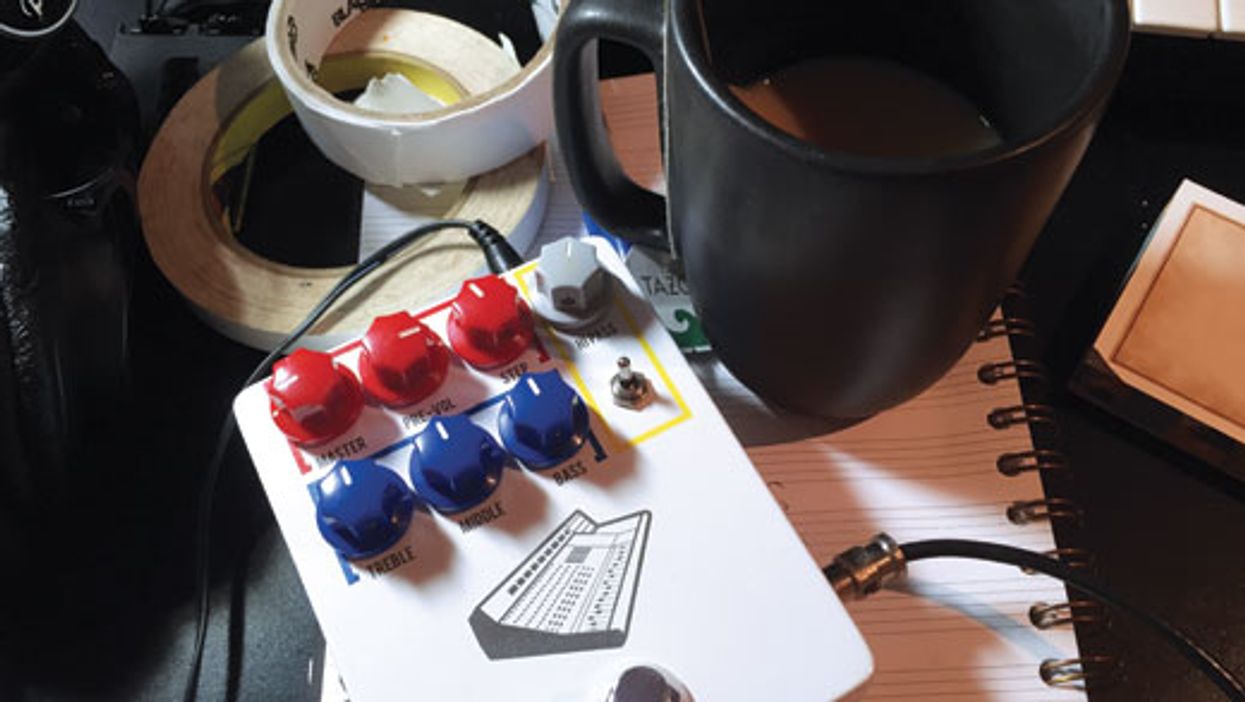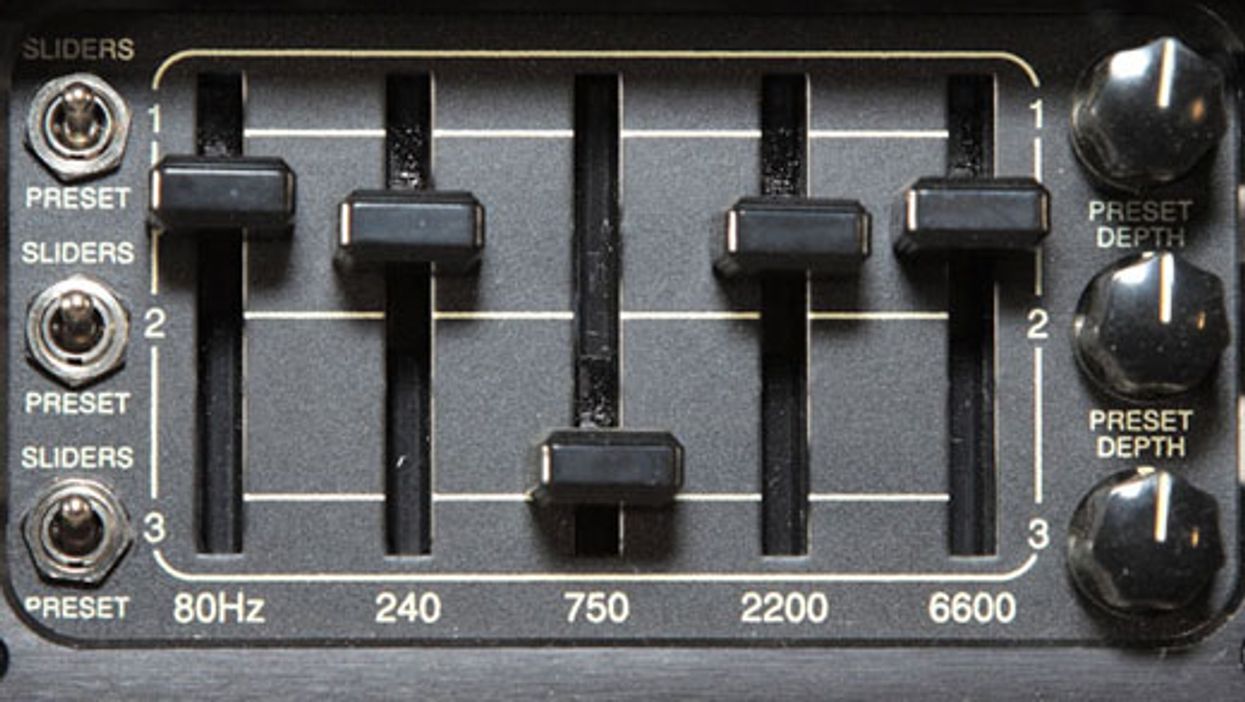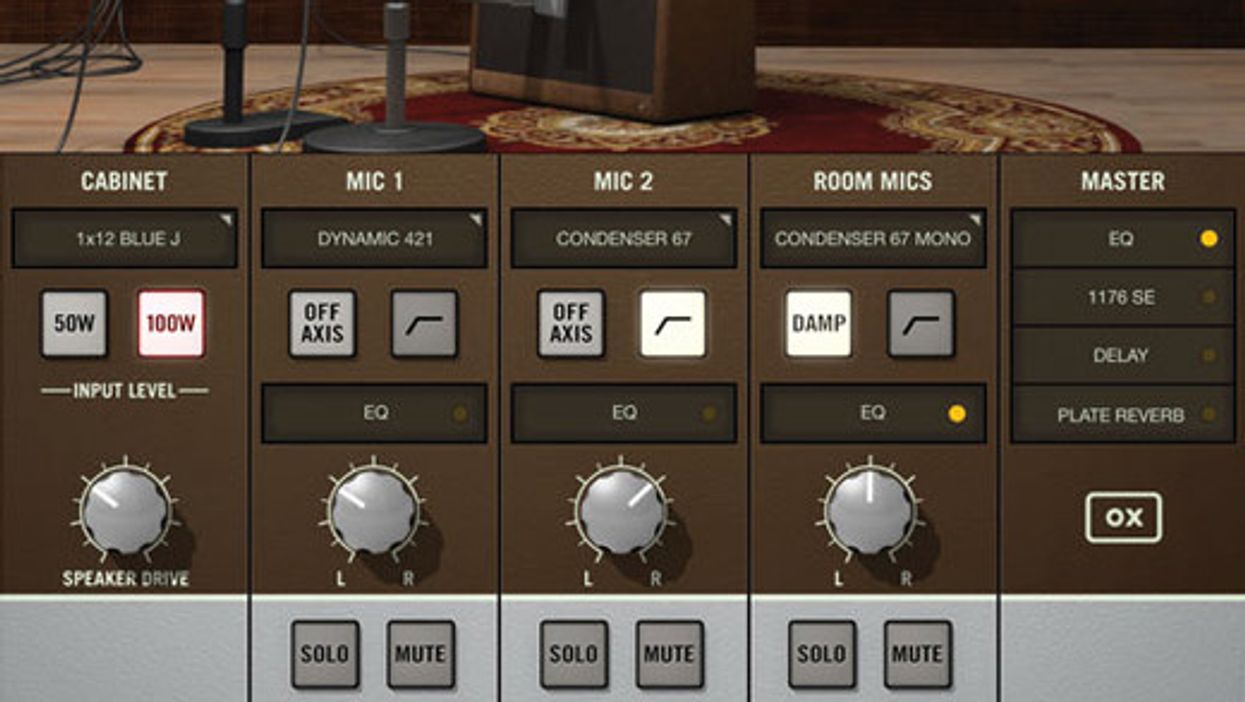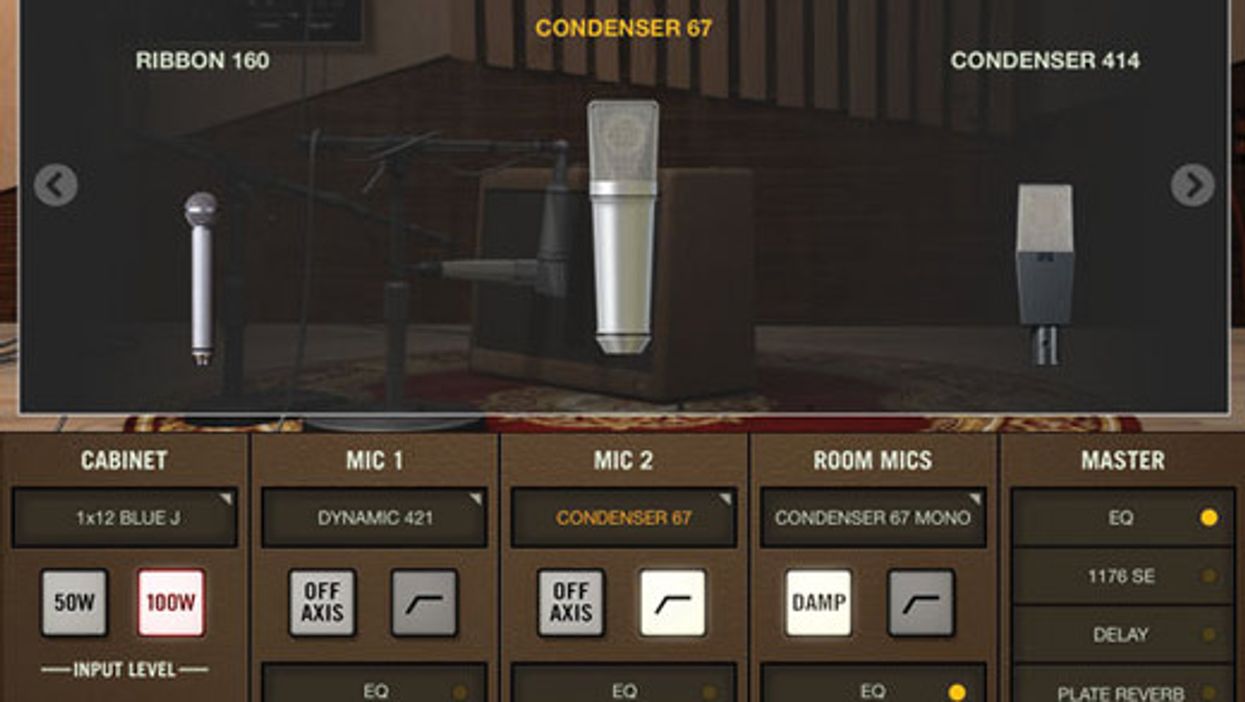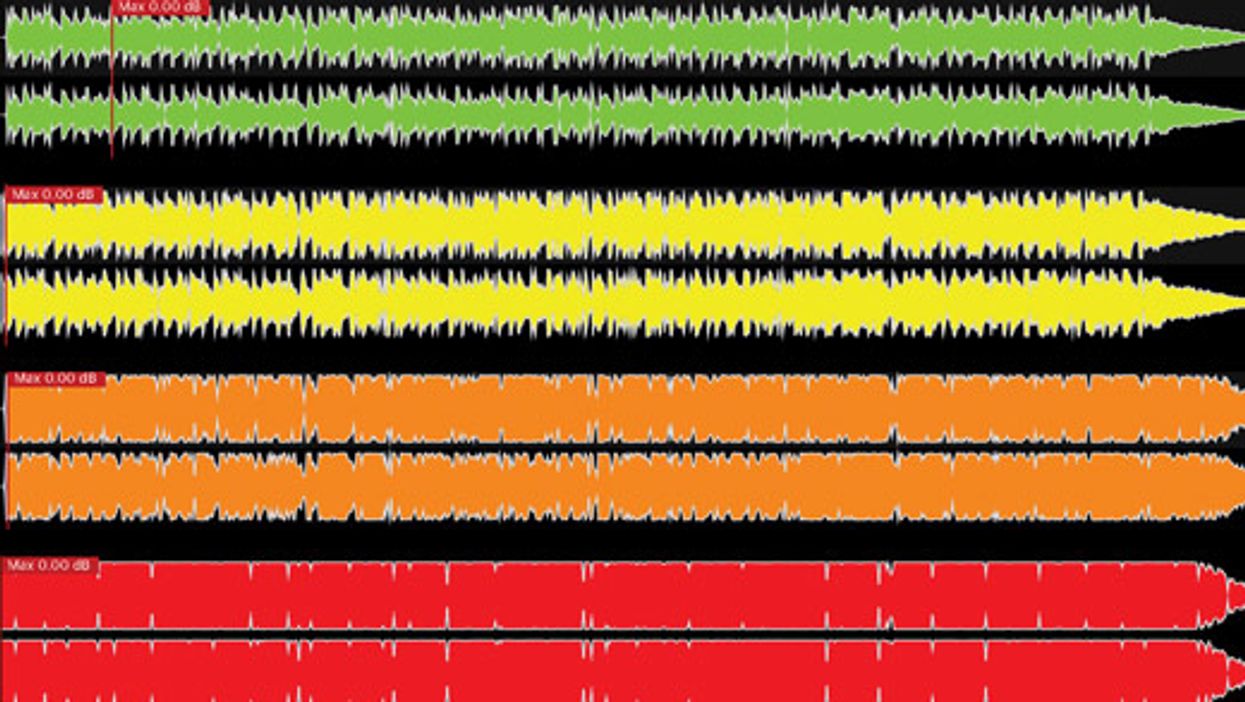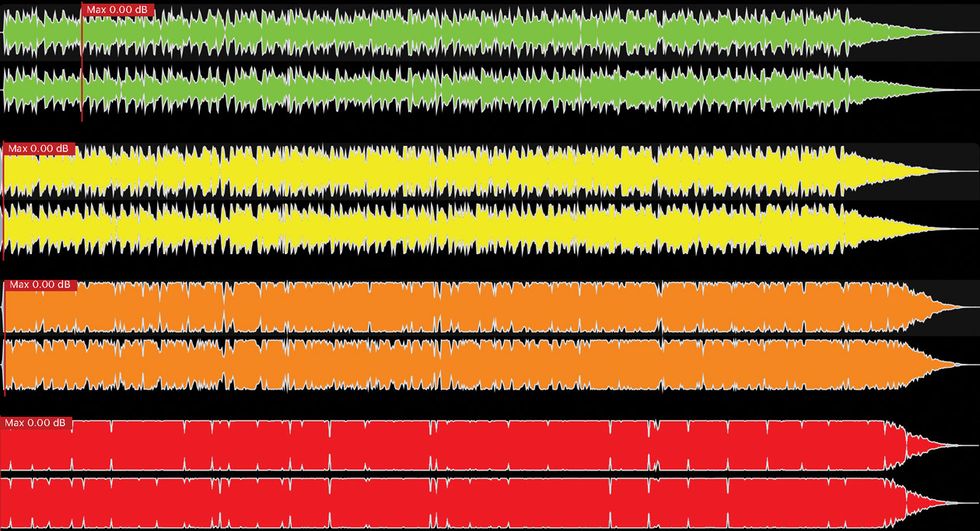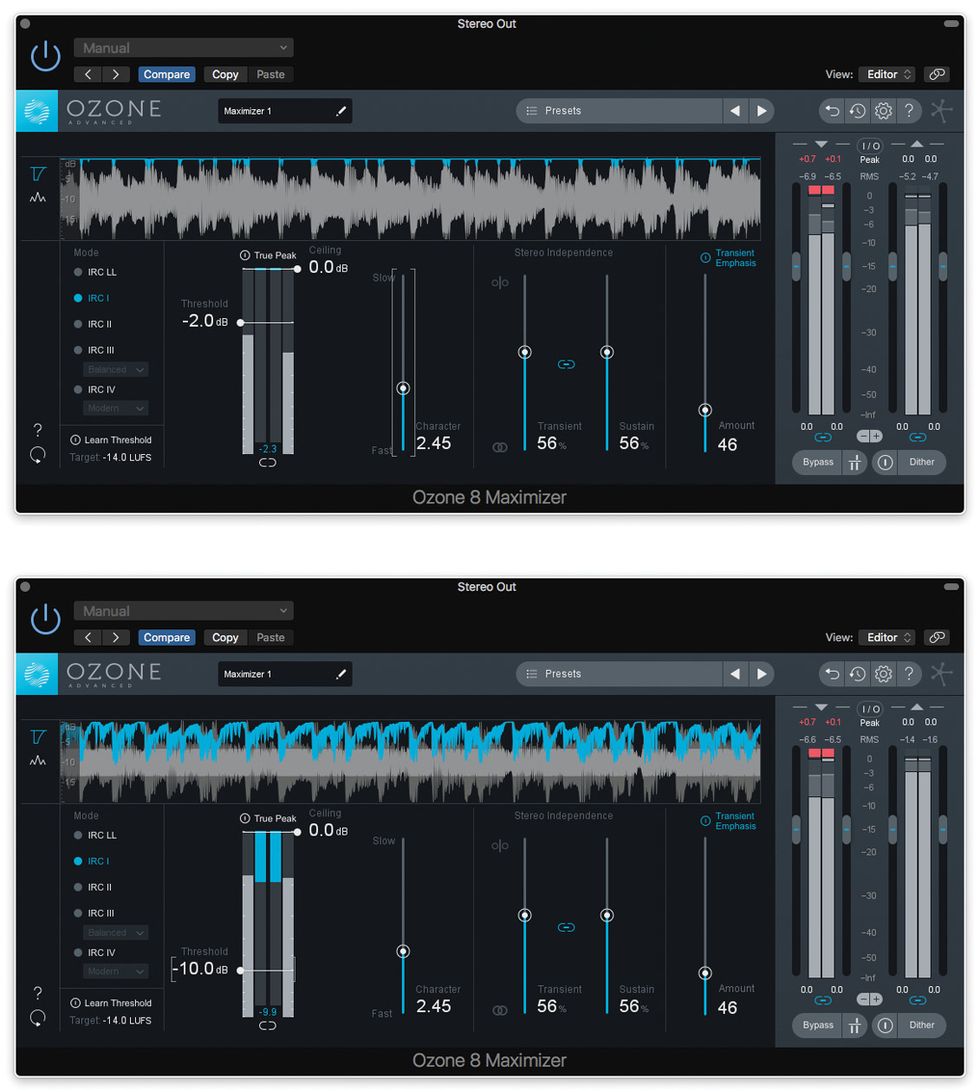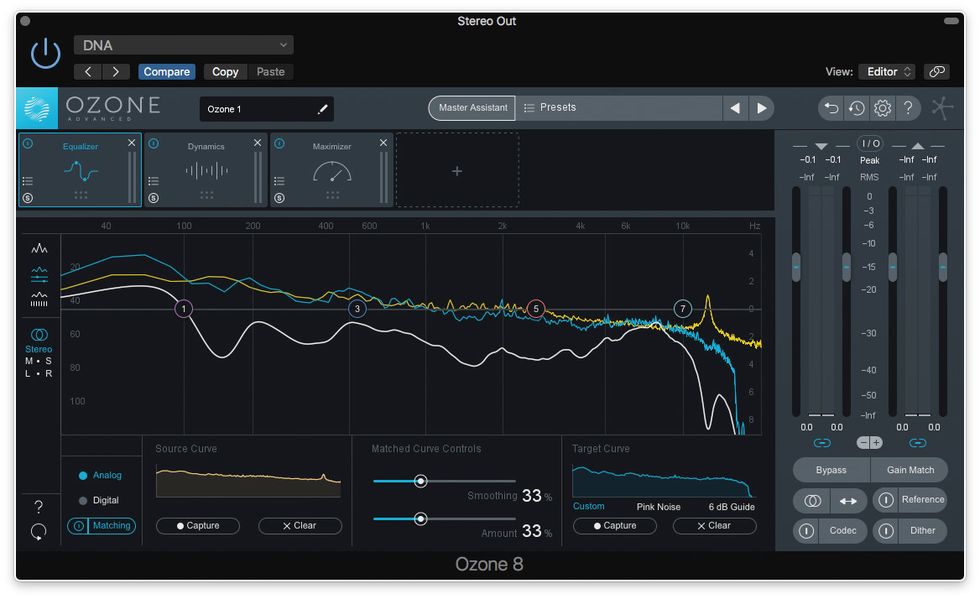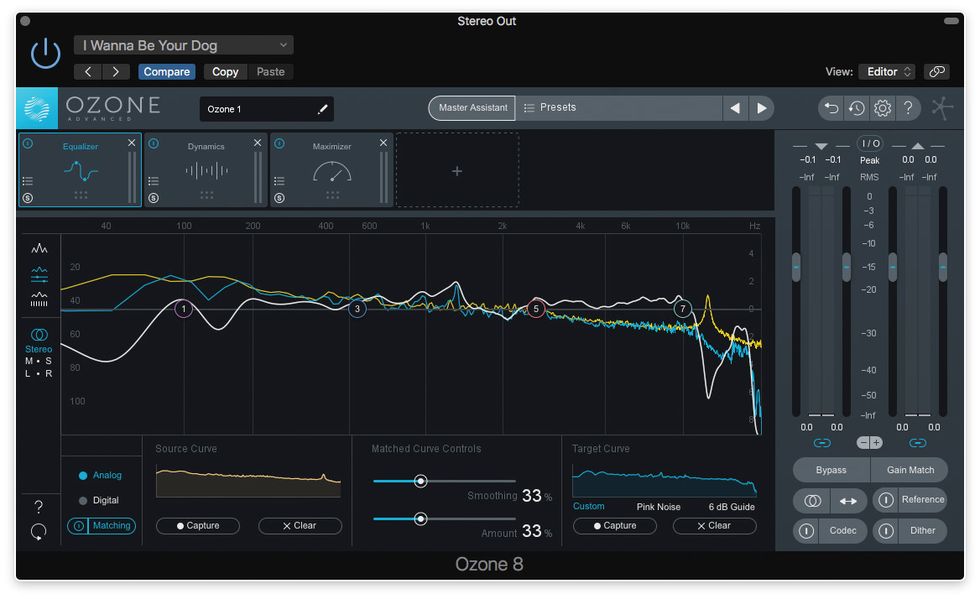Hey, remember that guitar mag article on prepping for studio work? The one that said you should always change strings before recording because you want the brightest, loudest, most accurately intonated sound? I've edited words to that effect often over the years.
Then there was that column that told you to avoid last-minute string changes at all costs, because well-worn strings provide better tuning stability, more consistent dynamics, and fewer finger-squeaks. Yeah, I've edited that article at least as many times.
So who's right? I'll whip out my standard wishy-washy answer: "They both are—it depends on the context." So let's listen objectively and consider those contexts.
Unless you're cutting a solo guitar recording, the tone in isolation doesn't mean crap.
Don't you ever wash that thing?
Let's start with a recording made with filthy, disgusting strings. I grabbed my battered but beloved Hamer 25th Anniversary model (a Gibson-flavored axe retrofitted with Seymour Duncan's Joe Bonamassa PAF pickups). These days I play flatwounds almost exclusively, but I string this guitar with roundwounds to have a "normal" reference for gear reviews. It had worn the same set of U.S.-made, all-nickel strings (gauged .011-.052) for something like 18 months. I hadn't cleaned the fretboard in years, and it was thick with muck. You could have planted a crop of potatoes between the 3rd and 4th frets.
Ex. 01 Old Strings (Dry)
Still, the strings didn't intonate too terribly, so I plugged in and improvised a short phrase, recording direct and then reamping through a small combo with a hint of spring reverb, but with no additional EQ or compression in my DAW (Ex. 1).
A little plonky-sounding, perhaps, but it's not that dreadful, is it?
Ex. 02 New Strings (Dry)
Next I snipped off the ancient strings, gave the fretboard a desperately needed scrub, and installed a new set of the same string type. I played and stretched strings for five minutes or so, and then duplicated the performance at identical recording settings (Ex. 2).
As expected, there's a bit more shimmer. And curiously, it sometimes feels like the low-mids have been scooped relative to Ex. 1, though I suspect that's a psychoacoustic side effect of the revitalized highs.
Ex. 03 Old Strings (EQ)
But how meaningful is this difference in timbre? Could you duplicate the brighter treble via EQ? Check out Ex. 3, which is simply Ex. 1 again, but with a bit of a DAW EQ bump around 2 kHz.
The EQ doesn't exactly make the old strings sound new, but to my ears, the modified old-string clip now sounds closer to Ex. 2 than to its original pre-EQed tone.
Ex. 04 Old Strings (Mix)
Which sounds best? Stop—don't answer that question! It's a trick! Because unless you're making a solo guitar recording, the tone in isolation doesn't mean crap.
Ex. 05 New Strings (Mix)
Let's consider the tonal differences in the context of a band arrangement, using typical mix effects. Ex. 4 features the old strings. Ex. 5 features the new ones.
06 Old Strings (EQ'd Mix)
And in Ex. 6 the old strings are EQed to sound newer.
Um, not super dramatic, is it? It's a reminder that the quality and intensity of a performance is approximately 937 times more important than such subtle tone variations.
Making soup. Now that we have a doubled part played on very old and very news strings, what sort of sonic mischief can we get into?
Ex. 07 (Pseudo Flange)
In Ex. 07 you hear both guitars panned in center for an "organic flange" effect.
Ex. 08 (Wide Image)
The tracks are panned far left and right in Ex. 08 for a dramatic stereo spread.
Ex. 09 (Filter Mesh)
Finally, Ex. 09 is a complex mesh: Both tracks are routed through filters, but the left-panned track's filter is panned right, and vice-versa.
Change for the better?
I suppose my answer to the "should I change strings?" conundrum is, "Eh, whatever." My advice is to go with whatever is most likely to inspire your best performance. Maybe worn-in wires make you feel cool and confident, like some old-school Stax session cat who hasn't swapped strings since 1962. Or maybe installing a fresh set is an upbeat preparation ritual, like sharpening your pencils and organizing your desk before an inspired day of writing. (Though, as any writer's-block sufferer can tell you, sharpening and organizing can become obsessive habits that flourish in lieu of writing.) Musician, know thyself and string accordingly.
[Updated 10/15/21]




